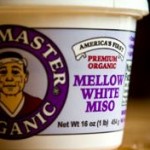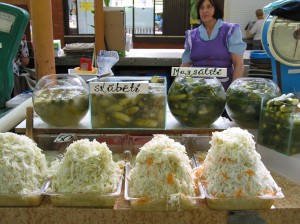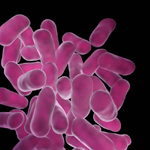Probiotics and Probiotic Foods
Though we think of ourselves as single organisms, we are really walking superstructures housing trillions of organisms which need to exist in ecological balance. Our flora protects our skin and helps manufacture vitamin D, lines our guts with a living wallpaper that extracts nutrients, protects against heavy metals, attacks pathogens, outcompetes pathogenic viruses, and makes enzymes. The flora consists of thousands of different types of organisms, making up 3% of our body weight, 90% of our cells and 99% of the DNA in our bodies. The appendix stores them in biofilms to repopulate the gut and adjust the mix as it samples digestive juices. Without the bacteria we would not live.
Antibiotics, low quality food, candida overgrowth from high sugar diets, medications and electronic stress all impair the health of our gut ecology. To re-establish our flora we need:
- Sources of probiotics including Lactobacilli like acidophilous, Bacteroides, Bifidobacterium, Eubacterium, Saccharomyces boulardii and Peptostreptococcus but providing a wide variety or different organisms..
- Inulin or fructoligosaccharides (FOS) in Jerusalem artichokes, chicory root, dandelion root, burdock, bananas and garlic, and beta glucans in barley or oatmeal.
- Bitters before meals which help keep the acid/base environment favorable.
- Real fresh food (the kind without writing on it, that your great grandmother would recognize) which contains enzymes, nutrients and often its own probiotic bacteria.
I prefer food based sources of probiotics because they come with their own prebiotics and tend to have a variety of organisms that may not be in pill form. For instance, most probiotic pills only have lactobacillus or bifidobacteria. Yet there is some evidence that the fruit-based probiotic yeast Saccharomyces boullardi can outcompete Clostridium difficule and the probiotic Oxalobacter formigenes can break down the oxalates that build up in kidney stones and some fibromyalgia. (Still looking for the source of Oxalobacter which is easily killed off by Doxycycline.) In Europe a benign strain of E. coli is sold as a probiotic, one which may have some effect in reducing obesity, although the FDA refuses to even consider the possibility of a probiotic E. coli. It is true that we have some possibility of contamination in fermented, our noses and taste buds will generally protect us and we should both be attentive to cleanliness and off flavors that tell us to discard contaminated foods.
Although you can purchase probiotic pills, they are notoriously difficult to keep alive and should always be found refrigerated and not be close to their expiration date. The amount of live culture is often overstated because storage in route may not be cold or they die off in the jar. Parmax human lactobacillis HLC probiotics (link below) puts half again as many organisms as they state on the package, have been tested for travel and are quite effective: their Synbiotics is good for an intensive bowel treatment and their High Intensity is good for maintenance. Florastor helps round out the organisms, providing non-lactobacillus or bifidus cultures. There are dental probiotics which add organisms to the mouth like that produced by Life Extension. Otherwise look for a good, broad spectrum probiotic with FOS from a store with high turnover. Shelf stabilized probiotics probably are not that stable.
Prebiotics like fructooligosaccharide (FOS) and inulin feed the probiotic organisms and allow them to proliferate in the gut. They ought to be in probiotic supplements to help keep them alive. However your gut also needs to be receptive to them. Rather than purchasing a prebiotic supplement, eat a serving of Jerusalem artichokes, asparagus, onions, leeks, burdock root, garlic (in quantity), shallots, jicama root, chicory or dandelion root, barley or yacón each day.
So better than supplements, go pull up a dandelion before dinner, give it a light rinse and eat the whole thing: bitters, inulin and some of those expensive soil based bacteria for free.
Probiotic foods include:
1, Plain yogurt- get the full fat version, without sugar, as the fat protects the flora from stomach acids. I usually get one of each brand in the health food store, including those from different types of milk (goat, ewe, biodynamic cow, etc.)
2. Unpasteurized blue cheese is my first line of defense after antibiotics. Get one with lots of blue lines, preferably from a store that knows how to store cheese. If you don’t normally eat milk or dislike it, just take a medicinal dose, say one teaspoon.
3. Miso- make sure it is an organic, live, refrigerated miso. There are non-soy versions like chickpea miso, but unless you have soy allergies, a small amount of fermented organic soy won’t hurt you.
4. Kefir, buttermilk, cultured sour cream or other fermented foods, whcih can grow in both dairy and non-dairy forms.
5. Lactic acid fermented foods like sauerkraut, grated carrots and ginger (Hawthorne Valley), kimchee, unpasturized pickles, real sushi ginger.
6. Fermented but not pasteurized fruits or juices. This produces Saccharomyces boulardi but can also produce less medicinal yeasts if they get a foothold first. Since many people are trying to avoid foods that can be fermented by candida, I prefer to use a vinegar mother for fruit juices. Lemon beers and cherry bounce are two traditional fermented juices that still had probiotic organisms, found in historic cookbooks. However alcohol kills the live organisms. While they may provide material for recombination, I prefer Florastor as my source of Saccharomyces boulardi. (It might be worth using as a starter if you want to experiment with fermented fruit juices since it reduces candida and other yeasts.)
7. Fermented juices or teas like live vinegar or kombucha. These two beverages have a bacterial mat called the “mother” which is a symbiotic culture of bacteria and yeast (SCOBY), comprising Acetobacter (a genus of acetic acid bacteria) and one or more yeasts which use cellulose to form a mat. Kombucha is a type of vinegar which is generally fermented from sweetened tea. A kombucha culture may contain one of more of the yeasts Saccharomyces cerevisiae, Brettanomyces bruxellensis, Candida stellata, Schizosaccharomyces pombe, Torulaspora delbrueckii, and Zygosaccharomyces bailii. A low alcohol production by the yeasts contributes to the production of acetic acid by the bacteria. The content of these probiotic mats can vary from one batch to another and of course need monitoring for off flavors or colors.
How To Culture Probiotic Foods:
Kefir, Yogurt and Buttermilk
Milk can be cultured by putting a live culture into milk warmed to around 90 degrees. Cover loosely and keep in a warm place overnight. Whole milk will hold together as yogurt better than skim milk, although skim milk boosted up with dry milk will be thicker. In general however raw, grass-fed milk is what you want to find. If you have access to a farm store (like the Hawthorne Valley Farm Store in Ghent, NY) where raw milk can legally be sold, get extra and culture it into kefir, yogurt or buttermilk. To make yogurt, kefir or buttermilk, you can use a quarter cup of a pre-made substance (make sure it has live cultures and no stabilizers) to a quart of milk. For buttermilk you may want to add a half-teaspoon sea salt. You can generally keep it going at least six or seven times if you are careful to keep it clean and not exhaust the starter, and often far more than that. If any off smells or flavors develop, discard and buy a new starter.
Coconut Kefir
The milk from raw young coconuts can be made into kefir. These usually come in their husks, often with a pointed top or aseptically packaged. Saw off the pointed top with a serrated knife or pull saw until you find the coconut, then punch a hole with a hammer and large nail or awl. Enlarge the hole and pour out the water to ferment. You can either use a few tablespoons of kefir from a dairy source or purchase cultures from BodyEcology.com or some health food stores. Leave overnight in a warm place and the milk will turn into a tangy bubbling liquid which can be drunk straight or mixed with juice. The meat can be removed, put in a blender and fermented with the culture to make a tangy coconut cream. You can also use water kefir grains in coconut water and ferment for a night or two.

Apple cider can be fermented into live vinegar with a mother of vinegar culture. You can try using raw Braggs vinegar or purchase a mother culture on the web. Add the mother (which is a jelly-like mass) to the cider, loosely cover and place in a cool dark place. Kombucha is basically a vinegar, fermented from a mother of vinegar (the “shroom”) in a sugar-sweetened black tea base. For that get a piece from someone else’s mother or use a vinegar mother. Kombucha must be kept uncontaminated- discard if strange colors, especially black areas, or smells or tastes present.
Sourdough
While sourdough products ought to be avoided by those with candida overgrowth, obesity or gluten sensitivity, the fermentation provides probiotic organism structures that can be recombined with live organisms and it reduces the gluten and other allergen load of bread. Either take a cup of starter and add it to the flour, sugar, salt and water ingredients the night before baking. Return a cup to the original starter vessel and leave to ferment. If you do not have a starter, put two cups of barley flour, a quarter cup of sugar and enough water to make a batter consistency. Leave lightly covered away from direct sunlight until you see bubbling and a nice yeasty smell. This usually works best in warm weather. Then use as above, replacing with flour. If you do not use your starter, you need to feed it with flour, sugar and water to avoid overly acidic tastes or exhaustion of the sourdough yeasts.
Fermented Vegetables
Cultures from German to Japanese have made fermented vegetables, which usually have lactic acid bacteria. Sauerkraut, kimchee and fermented root vegetables are all examples. Gather clean, unblemished vegetables and slick, dice or grate. Ginger is often a good addition- it’s used in a Hawaiian Kimchee along with the chile peppers. Curry and cilantro have been added to cabbage. Cabbages should be shredded or cut into small chunks. Garlic, carrots, burdock (gobo), Jerusalem artichokes, onions and beets can all be fermented. Place in a clean jar, cover with sea salt brine, add a little starter from nonpasturized pickled veggies, cover and store in cool darkness. Refrigerate after three days. Traditional recipes only uses salt, but since air bacteria vary, I prefer to seed my own. Eat within a month. Sally Fallon’s book Nourishing Traditions has a number of recipes for fermented foods and I highly recommend it.

